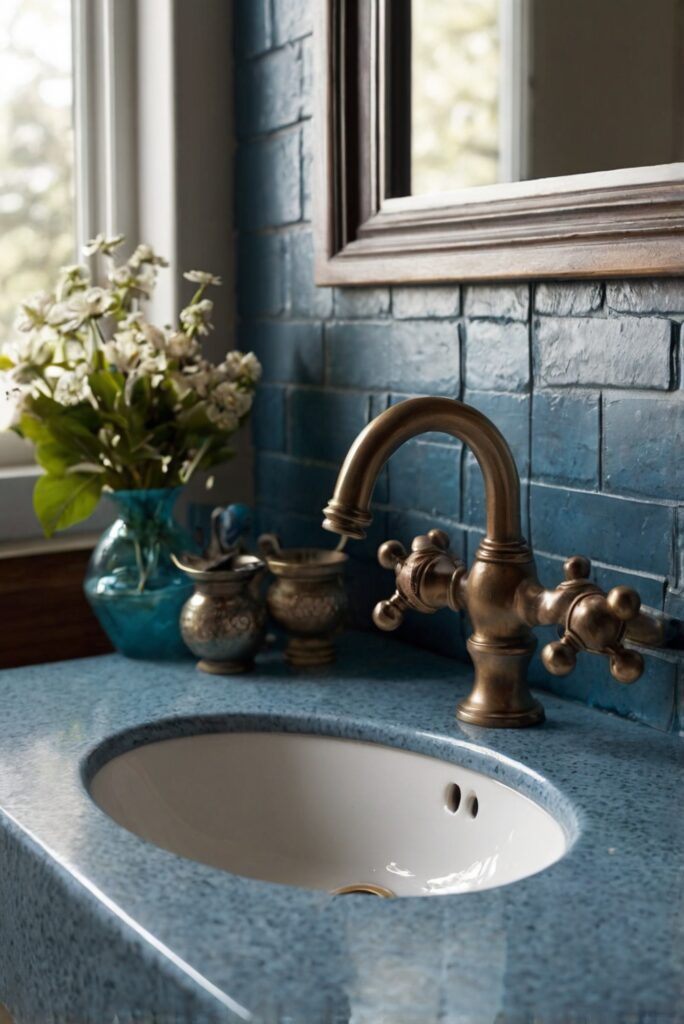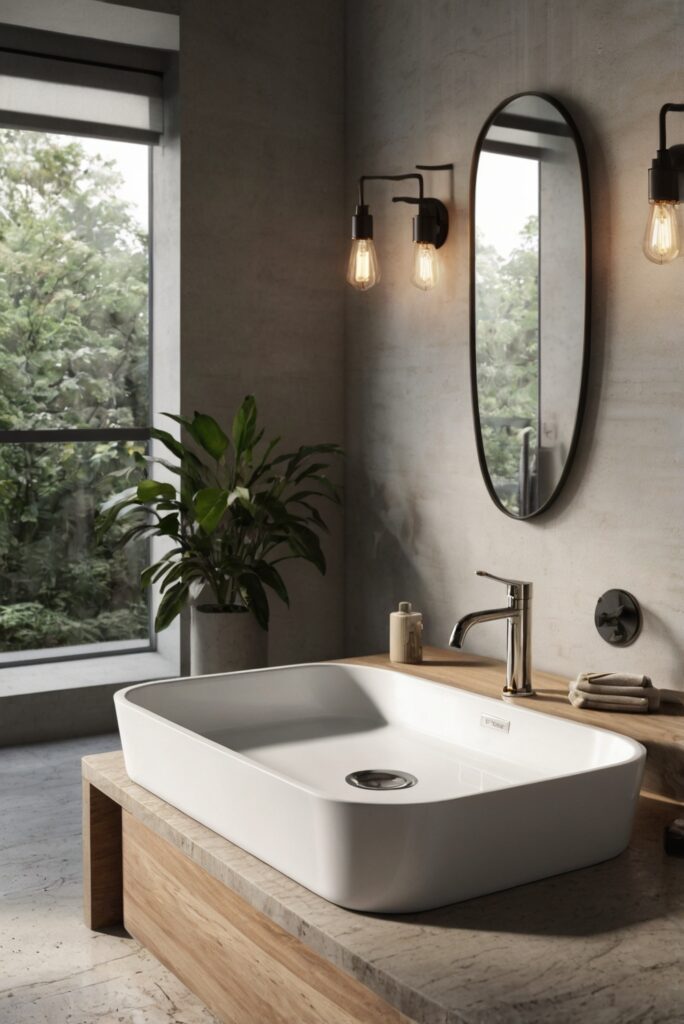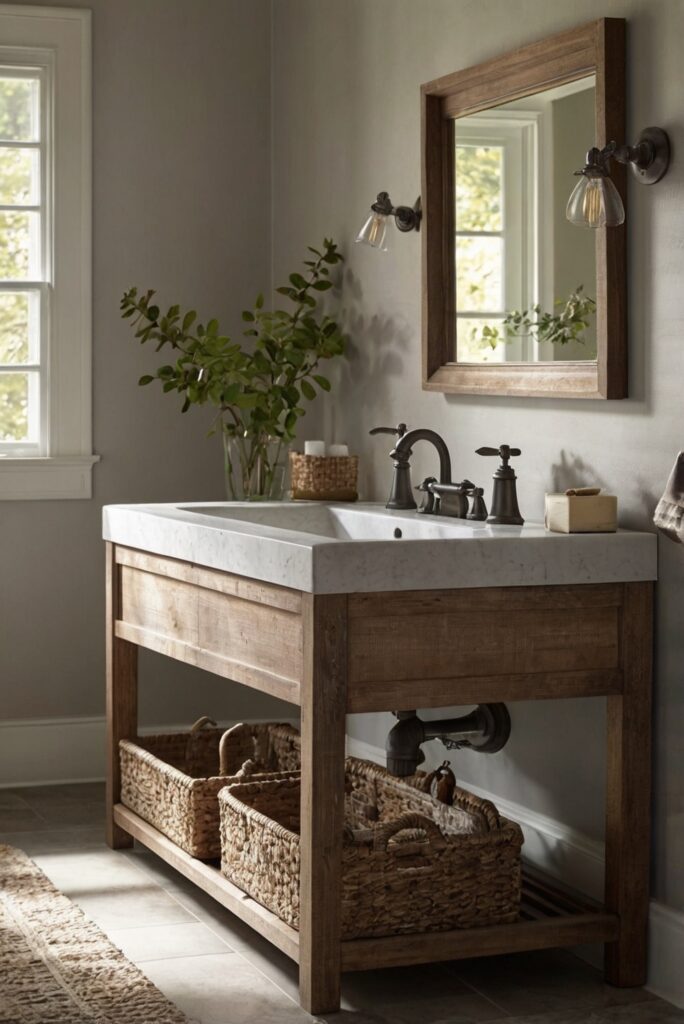Explore the top sink materials that ensure hygienic bathroom surfaces. Discover the ultimate daily interior design routine for a clean and stylish bathroom experience.
**
What Are the Best Sink Materials for Hygienic Bathroom Surfaces?
**
**
Ceramic, Porcelain, and Stainless Steel Sinks Are Among the Best Materials for Hygienic Bathroom Surfaces
**
When it comes to maintaining a hygienic bathroom environment, choosing the right sink material is essential. Ceramic, porcelain, and stainless steel sinks are highly recommended for their non-porous surfaces that are easy to clean and disinfect. These materials prevent the growth of bacteria and mold, ensuring a healthier space.
To enhance your bathroom’s hygiene levels further, consider incorporating proper ventilation, regular cleaning routines with disinfectants, and keeping the sink area clutter-free. Create a schedule for deep cleaning to remove any stubborn stains or buildup that may compromise hygiene standards.
Remember, a clean and hygienic bathroom not only promotes a healthier lifestyle but also elevates the aesthetic appeal of your home interior.
—
Focused on home decorating, home interior design, space planning, interior bedroom design, kitchen designs, living room interior, primer paint for walls, color matching painting.
What Are the Best Sink Materials for Hygienic Bathroom Surfaces?
Choosing the right sink material is crucial for maintaining hygienic bathroom surfaces.
When it comes to selecting sink materials for your bathroom, it is essential to prioritize hygiene. The best sink materials for hygienic bathroom surfaces are those that are non-porous, easy to clean, and resistant to stains and bacteria. Here are some of the top options:
- Stainless Steel: Stainless steel sinks are durable, easy to clean, and resistant to rust and corrosion.
- Porcelain: Porcelain sinks are elegant and smooth, making them easy to clean and maintain.
- Quartz: Quartz sinks are non-porous, stain-resistant, and offer a sleek and modern look to your bathroom.
Benefits of Using Hygienic Sink Materials
Investing in hygienic sink materials for your bathroom offers numerous benefits:
- Prevents Bacterial Growth: Non-porous sink materials prevent bacteria from thriving on the surface.
- Easy to Clean: Hygienic sink materials are easy to clean and maintain, saving you time and effort.
- Enhances Bathroom Aesthetics: Choosing the right sink material can enhance the overall look of your bathroom.
Tips for Maintaining Hygienic Bathroom Surfaces
Aside from selecting the right sink materials, here are some tips to maintain hygienic bathroom surfaces:
- Regular Cleaning: Clean your sink and bathroom surfaces regularly to prevent the buildup of bacteria and germs.
- Use Mild Cleaners: Avoid harsh chemicals that can damage the sink material and opt for mild cleaners instead.
- Proper Ventilation: Ensure your bathroom is well-ventilated to reduce moisture and prevent mold and mildew growth.
Choosing the Right Sink Material for Your Bathroom
When selecting a sink material for your bathroom, consider factors such as durability, maintenance, and aesthetics. It is essential to choose a material that not only looks good but also promotes hygiene and cleanliness in your bathroom.
In Conclusion
Choosing the best sink materials for hygienic bathroom surfaces is crucial for maintaining a clean and germ-free environment. By opting for non-porous, easy-to-clean materials like stainless steel, porcelain, or quartz, you can ensure that your bathroom remains hygienic and aesthetically pleasing. Remember to follow proper maintenance tips to keep your bathroom surfaces in top condition.
1. What are the best sink materials for hygienic bathroom surfaces?
The best sink materials for hygienic bathroom surfaces are stainless steel, porcelain, and quartz. These materials have non-porous surfaces that prevent the growth of bacteria and are easy to clean, making them ideal for maintaining a hygienic bathroom environment.
2. How do stainless steel sinks enhance bathroom hygiene?
Stainless steel sinks are a popular choice for hygienic bathroom surfaces because they are non-porous, making it difficult for bacteria to grow. Stainless steel is also resistant to stains and odors, making it easy to clean and maintain a hygienic bathroom environment.
3. Why is porcelain a good choice for hygienic bathroom sinks?
Porcelain sinks are another excellent choice for hygienic bathroom surfaces because they are non-porous and easy to clean. Porcelain is also resistant to stains and scratches, making it a durable and hygienic option for bathroom sinks.
4. What are the benefits of using quartz for bathroom sinks?
Quartz is a popular material for bathroom sinks because it is non-porous, resistant to stains, and easy to clean. Quartz sinks also come in a variety of colors and styles, making them a versatile and hygienic choice for bathroom surfaces.
5. How can proper sink maintenance contribute to bathroom hygiene?
Proper maintenance of bathroom sinks is essential for maintaining a hygienic environment. Regular cleaning with mild soap and water, as well as avoiding harsh chemicals that can damage the sink’s surface, can help prevent the growth of bacteria and maintain a clean and hygienic bathroom sink.



